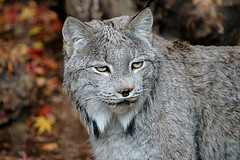
While global warming affects our own environment, the climate changes are clearly threatening wildlife in the most endangered areas. With the Warming and Wildlife Campaign, the Environmental Defense Fund has chosen seven plants and animals to focus on to increase awareness of their struggle for survival. The seven species are:
- Sugar Maple Trees
New England's famous tree is a home and food source to birds and mammals, provider of sap for maple syrup (revenue of $65 million each year!), and tourist attraction with its beautiful blooming colors. Being a cold weather tree, global warming is extremely critical to the life and attraction of the tree.
- Polar Bear
One of the most threatened species, polar bears make their living on arctic sea ice. As the ice disappears, so does their habitat. Bears also appear to be shrinking in size while the melting ice is making it harder to hunt their primary food source, seals.
- Monarch Butterfly
This beautiful, tiger-colored butterfly makes a long migration trip from Mexico to eastern U.S. states and Canada each year to survive. Both the colder and warmer temperatures will be lethal to the butterflies. Additionally, plants country-wide pollinated by these creatures will be hurt.
- Tufted Puffin
Called the "clown of the sea," these funny looking puffins are sea birds, feeding on small fish along the water's surface. These fish are sensitive to surface temperature, so changes are separating the puffin's food source.
- Leatherback Sea Turtle
Leatherbacks, the largest living sea turtle, will be affected in many ways by climate changes. Sea levels rising and tropical storms will destroy their nesting on the beach, warmer ocean temperatures affect reproduction, and changing ocean currents will destroy their living customs. Moreover, leatherbacks feed on jellyfish. Without them, the jellyfish populations will intensify.
- American Pika
Pikas, a small hamster-like animal, live amongst the rocks in cooler, high latitudes. Insulating themselves in the snow during the winters, hot temperatures can be fatal to these animals.
- Canada Lynx
These cat-like lynxes also rely on snow for hunting and habitat. Without snow, their competition (coyotes and bobcats) will be brought back to the area jeopardizing the lynx's food sources and survival.
The campaign's goal is to encourage America to do their part before global warming eliminates these breeds forever.

